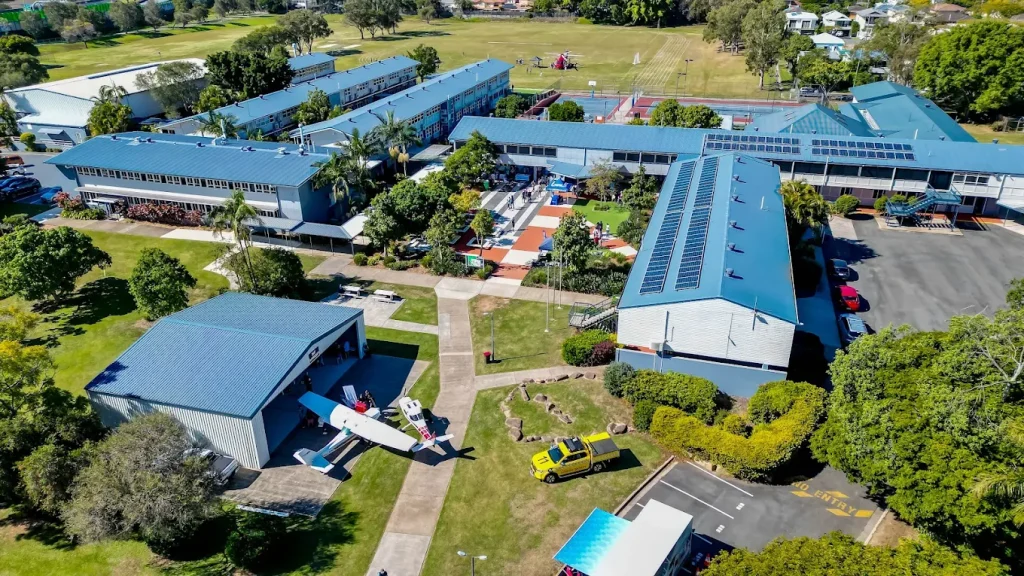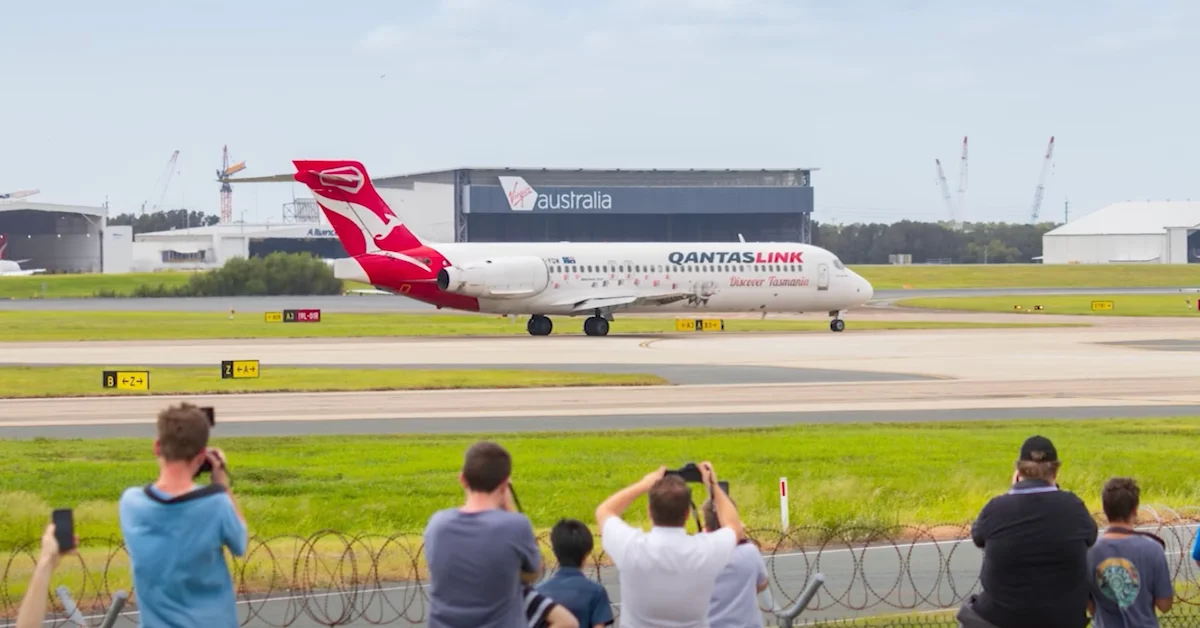A retired Qantas Boeing 717 has touched down at Brisbane Airport for the final time, not to carry passengers, but to help train the next generation of aircraft engineers.
Training Future Aviation Workers
The donated aircraft is now housed at Aviation Australia‘s hangar at Brisbane Airport, where it has been repurposed as a real-world classroom. Students from Aviation Australia and the Qantas Group Engineering Academy will have the opportunity to work directly on the plane’s systems, from engines and hydraulics to avionics and safety checks.
The jet, once flown by QantasLink and carrying the registration VH-YQW, concluded its last passenger service in December before being prepared for training. Instead of being scrapped or left in storage, the aircraft has been given a second life that keeps its technology in active use. Aviation Australia noted that having access to a full commercial aircraft provides students with an experience that textbooks and simulations cannot replicate.
For apprentices and trainees, this means entering the workforce with confidence and industry-relevant skills. The ability to practise on a complete, functioning aircraft gives them a level of preparation that shortens the step between training and employment.
A Partnership with Purpose
The initiative is the result of a partnership between Qantas and Aviation Australia, with support from Queensland. While official statements described the move as a boost to the state’s training sector, the focus remained on the long-term value for students and employers in aviation.
Aviation Australia explained that the 717 bridges the gap between classroom learning and industry practice. By training on the same type of systems used in airline fleets, apprentices can meet real-world expectations from the first day of their careers. This aligns with industry efforts to address the global demand for skilled engineers, a shortage that has impacted aviation maintenance operations in recent years.
Community links are also in focus. Aviation High, based in nearby Hendra, provides pathways for secondary students with an interest in aviation. Those students may progress into Aviation Australia programs, where the Boeing 717 will become an integral part of their training journey.

Photo Credit: GoogleMaps
Industry Commitment
Qantas emphasised that it was important for the last of its Boeing 717 fleet to continue serving in a useful role after more than two decades in operation. The airline, which is now introducing new Airbus A220 aircraft to its domestic fleet, sees the investment in training as part of keeping its long-term workforce strong.
Qantas stated that the Brisbane-based aircraft will provide future engineers with practical training in aircraft systems, reinforcing its commitment not just to new aircraft but also to the people who maintain them. The airline noted that this move helps ensure safe and efficient operations for years to come.
Aviation Australia added that the arrival of the 717 secures its place as a leader in aviation training. With the global aviation industry seeking more maintenance engineers, the organisation said Brisbane is well positioned to contribute to international workforce needs.
A Plane with a Legacy
The Boeing 717 type has a long history in Australia. First introduced in 2002 by Impulse Airlines and later absorbed into QantasLink, the aircraft became a regular sight on regional routes. VH-YQW, the aircraft now at Brisbane Airport, served travellers across the country before completing its final flight in 2024.
For many Australians, the 717 represented reliable connections between regional towns and larger cities. Now, the same aircraft will play a different but equally important role—helping to prepare the engineers who will support the next generation of aircraft that carry passengers around the nation.
A Community Focus
Brisbane Airport is already a significant hub for Queensland’s aviation industry, and the arrival of the 717 strengthens its place in education and training. Local students now have access to training that was once only possible through overseas programs or limited simulation facilities.
By embedding the aircraft within a local training program, the initiative keeps opportunities close to home for Queenslanders seeking careers in aviation. It also reinforces Brisbane’s role as both an operational centre and a training hub in the Asia-Pacific region.
Published 18-Sept-2025
















